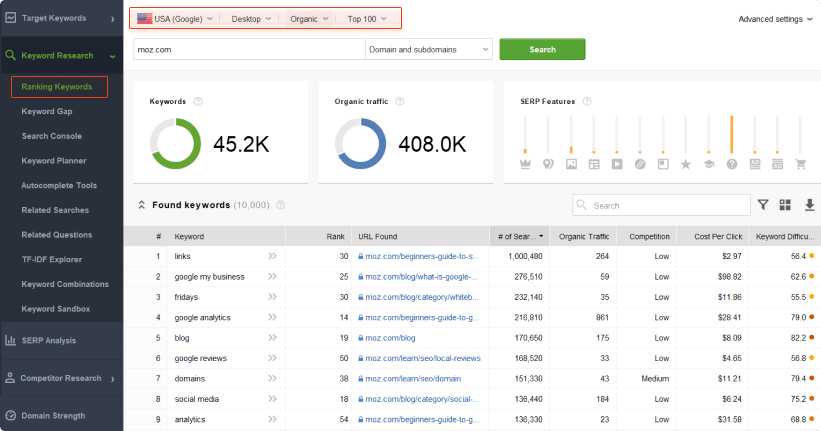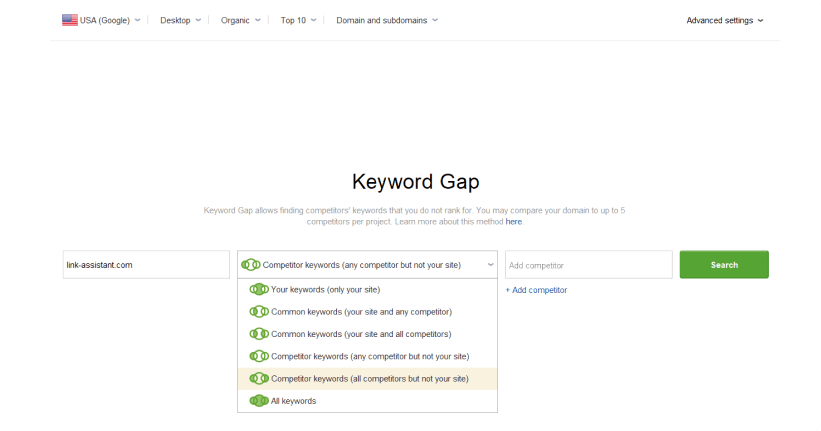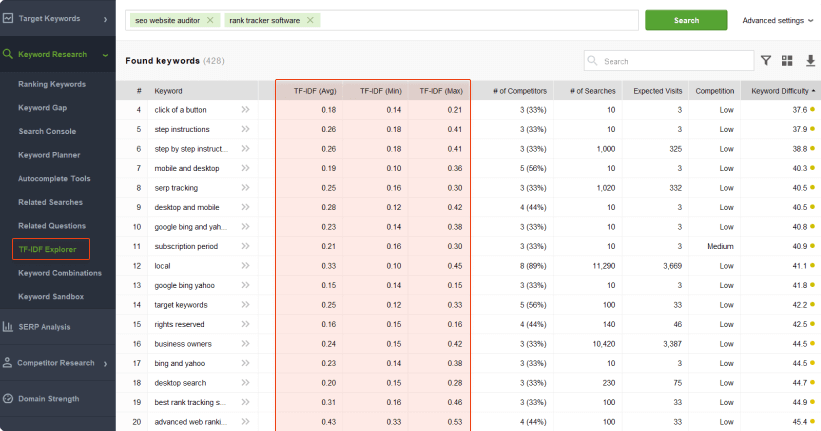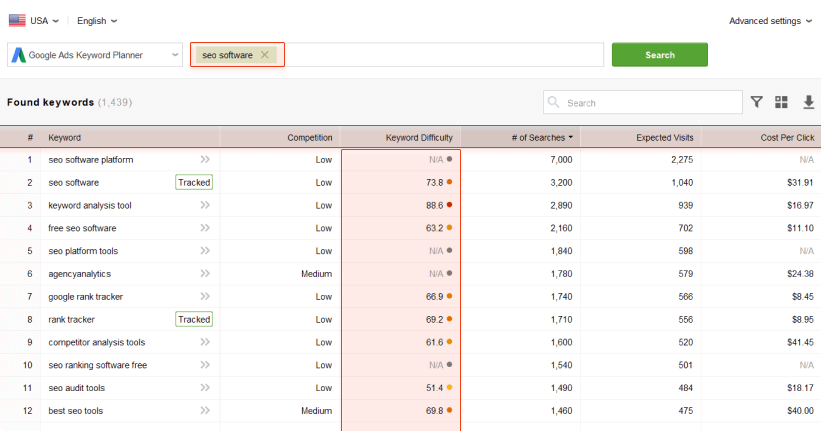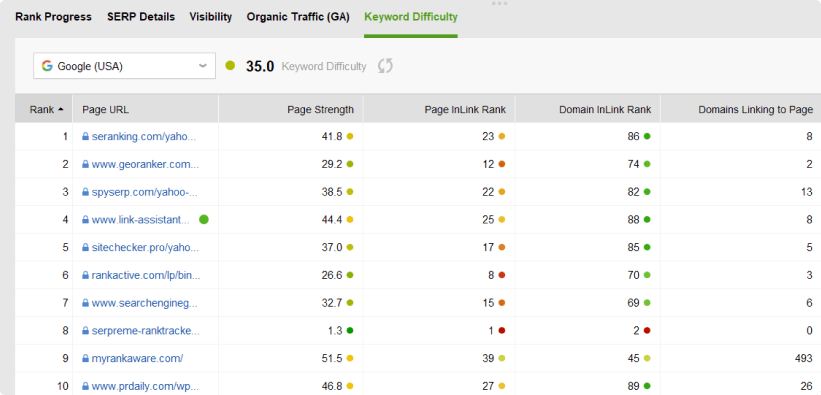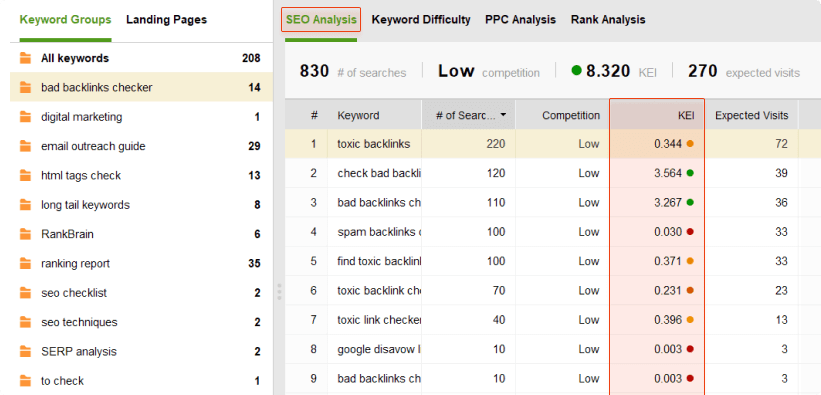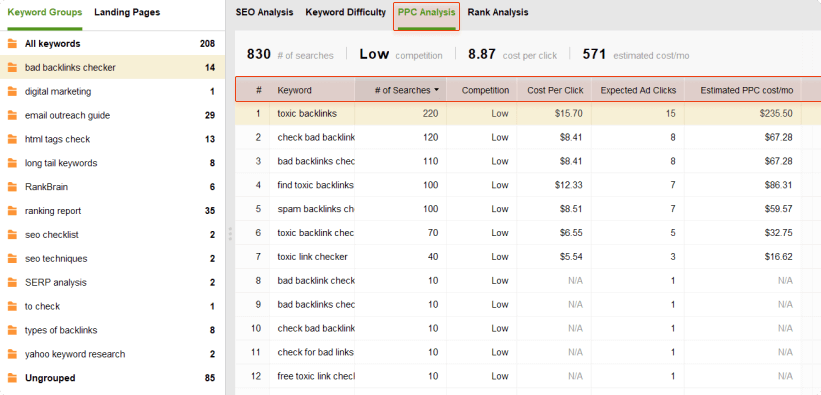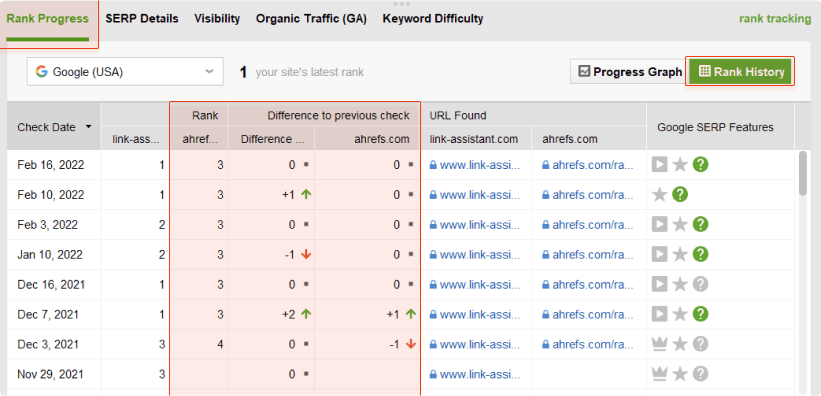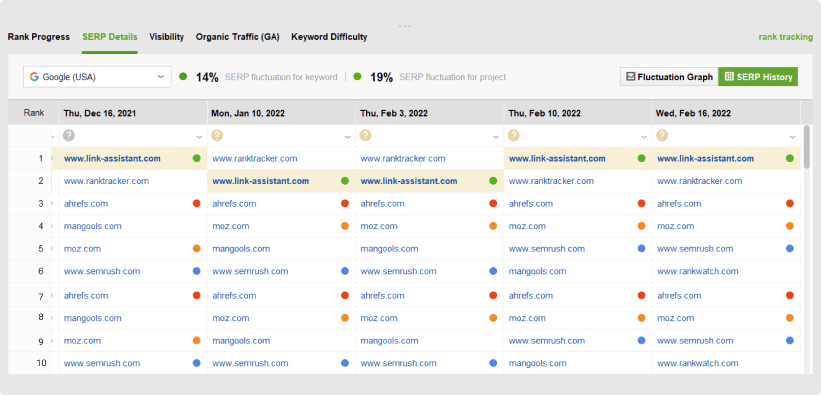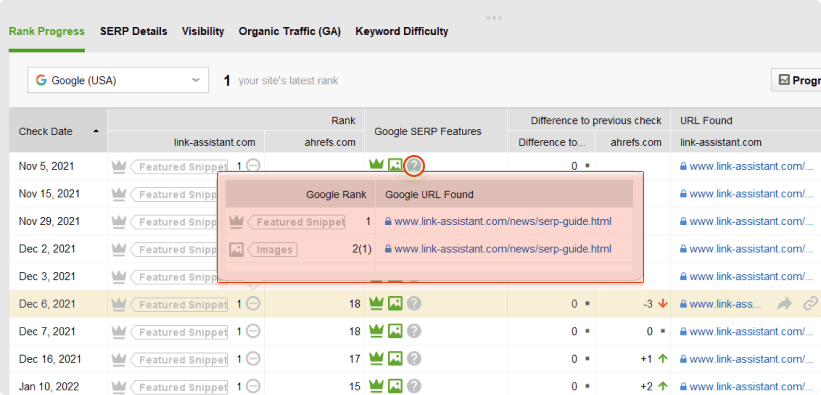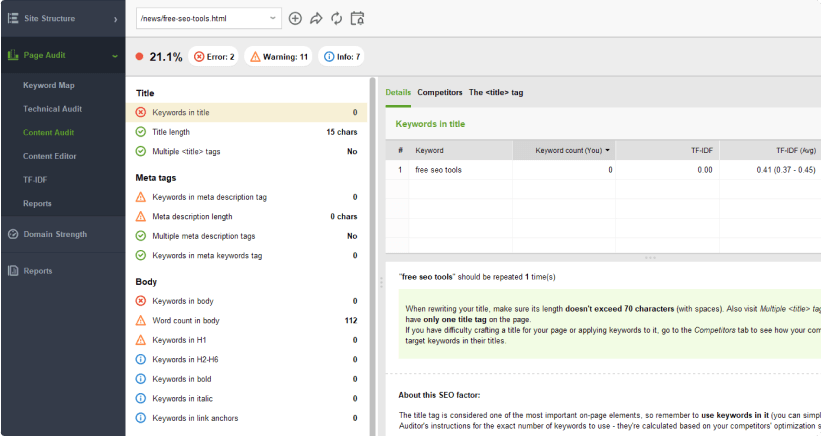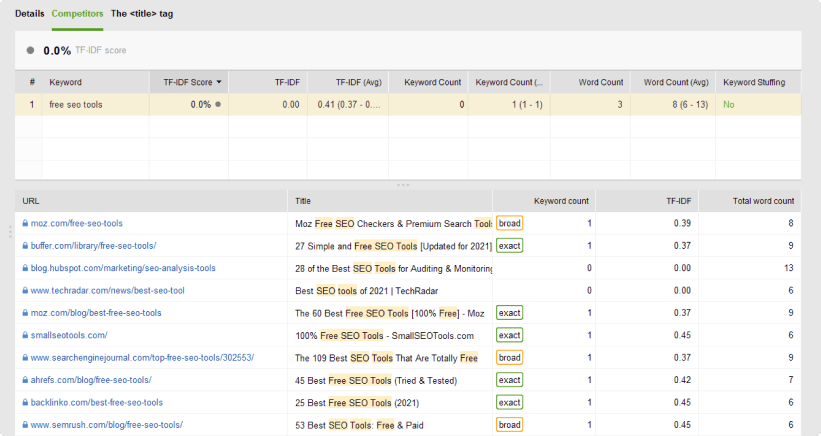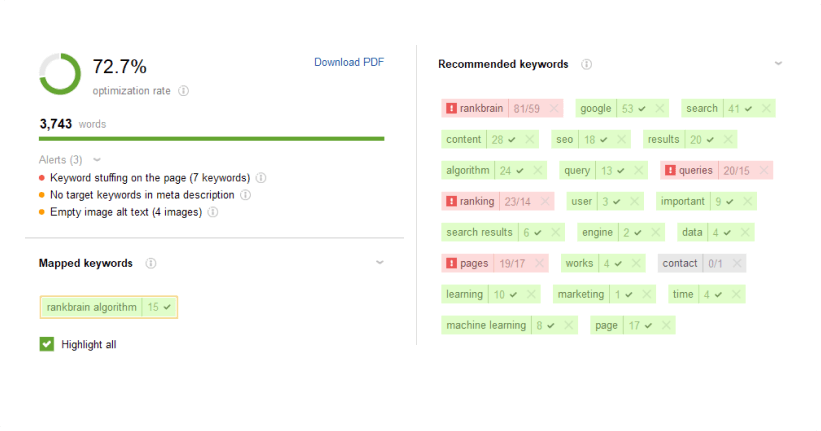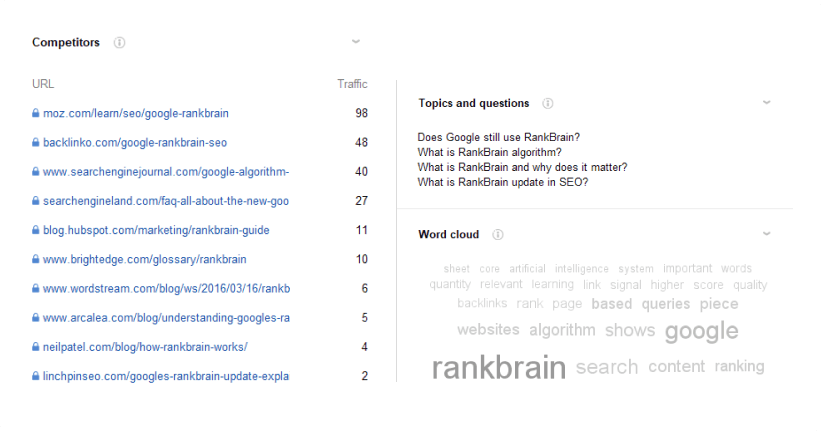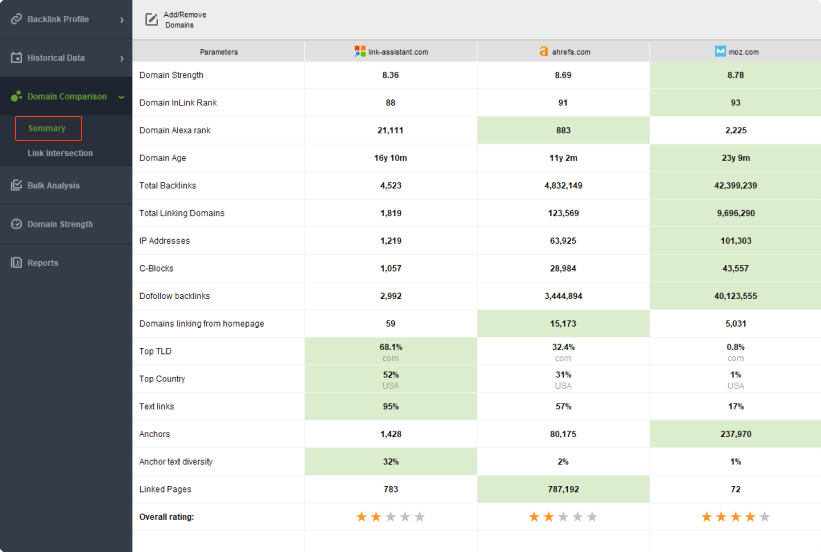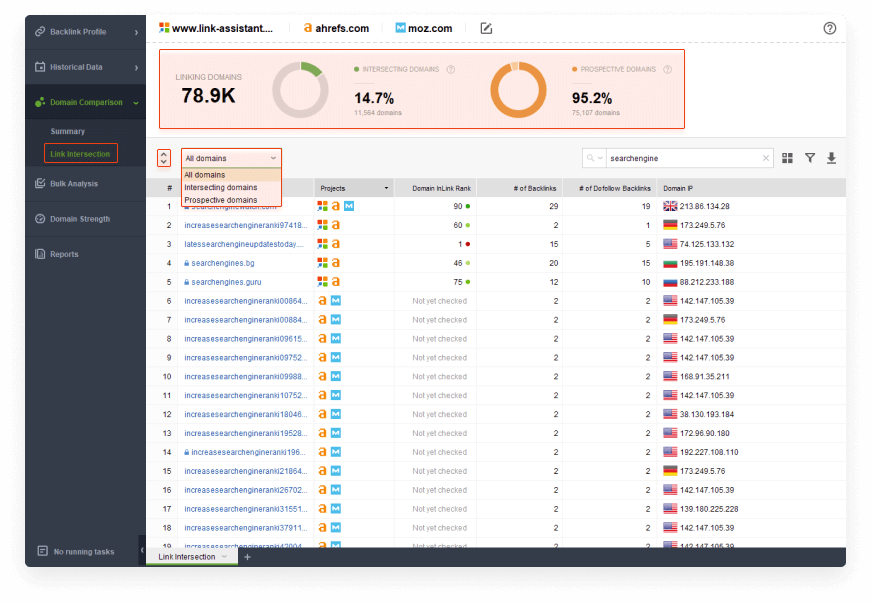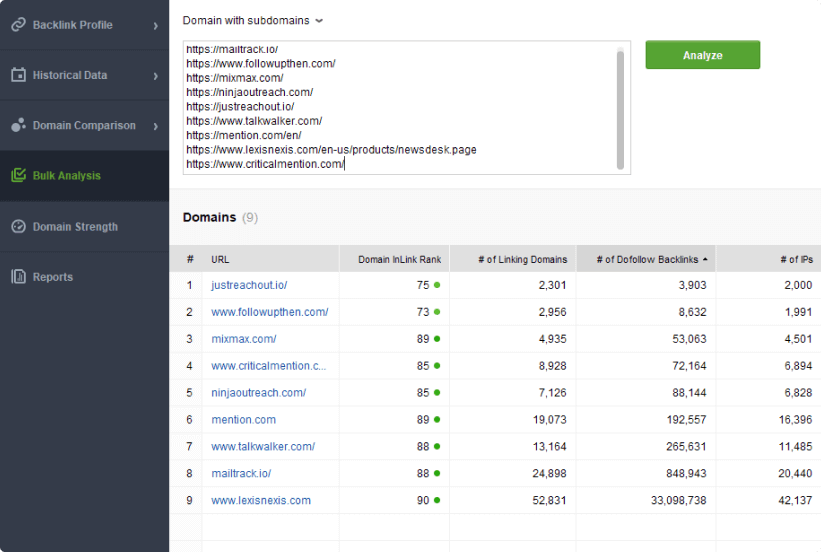SEO Competitor Analysis Tool:
- Unlimited organic research into traffic and ranking positions
- Site audit and on-page SEO to tweak competitor tactics
- Fresh and historic backlink index
- Scheduler for custom automated SEO tasks
- White-label reports for SEO agency clients
Try SEO PowerSuite
Step 1. Identify your online competitors
Domain Comparison


Find domain competitors
Identify topic competitors

Find competitors' top traffic pages

Step 2. Check competitors' domain strength
- Domain age
- Search traffic forecast
- IP address and country
- Number of pages indexed in major search engines
- Number of backlinks
- Social media popularity
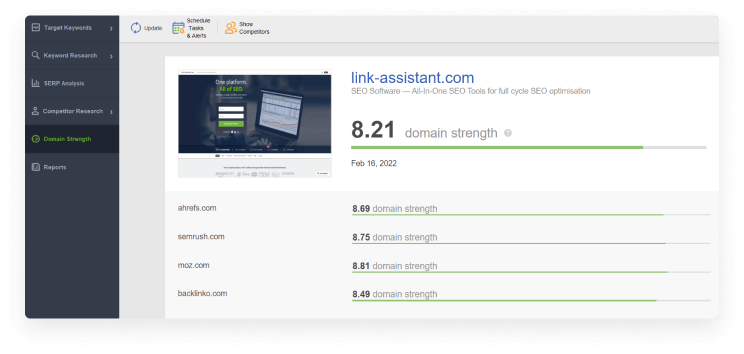
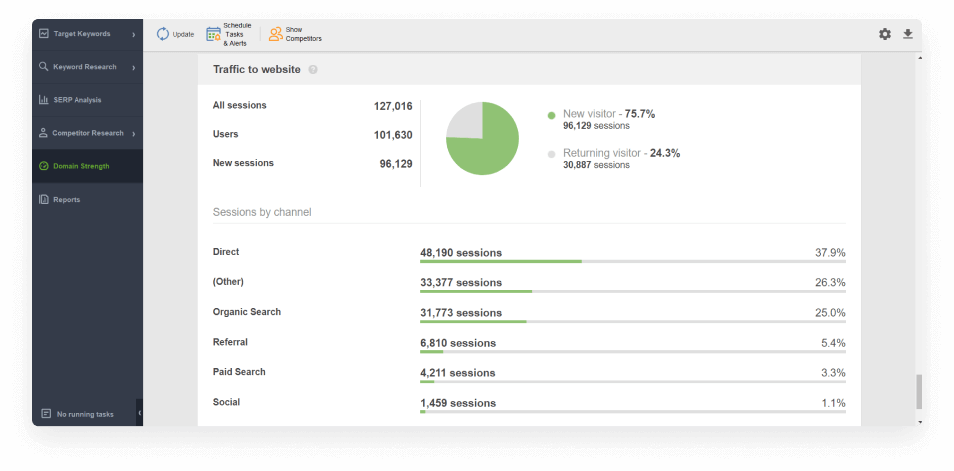
Step 3. Get competition keywords
Step 4. Analyze keyword competition
Step 5. Set up keyword position tracking

Step 6. Get insights from Google SERP analysis
Step 7. Audit your competitors' content
Website Structure Visualization


Competitor Content Analysis
Content Writing Assistant

Step 8. Find competitors' backlinks
Here's Your SEO Competitive
Research Software
- Discover top organic competitors
- Peek at competitors' SEO keywords
- Track competitors' rankings
- Push competitors out of SERP features
- Win competitors' backlinks
- White-label reports for SEO agency reporting
- Custom reports and delivery options for SEO clients
Most value-for-money tools with pricing plans from free to enterprise
| Free | Professional | Enterprise | |
|---|---|---|---|
| Number of projects | Unlimited | Unlimited | Unlimited |
| Number of keywords | Unlimited | Unlimited | Unlimited |
| URLs per crawl | 500 URLs | Unlimited | Unlimited |
| Backlinks to check | 1,100 | Unlimited | Unlimited |
| Competitors rank tracking | 1 | 5 | 40 |
| Backlink profile comparison | 2 | 5 | 5 |
| Saving history |
|
|
|
| Automated scheduler |
|
|
|
| In-built SEO reports |
|
|
|
| White-label reports |
|
|
|
Download SEO software for free:
FAQ
Organic competitors are the websites that target the same keywords as your own website.
In digital marketing, you need to have benchmarks against which you verify your efficiency. To develop your own SEO strategy, you must analyze the SEO competition to know how to beat the organic competitors and how to always stay on top of SERPs.
The SEO competition analysis follows these basic steps: you identify your organic rivals, find their best organic keywords, explore SEO tactics, and find which which of those are suitable for you. An integral part of competitive analysis is tracking your organic rivals to be always alert and up-to-date. Last, but not least, you analyze their backlinks to find opportunities for yourself. The analysis has to rely on measurable metrics (such as traffic and rankings) that can be tracked and integrated into the overall marketing plan.
Use a keyword checker to find your organic competitors' keywords that bring the most organic visits. There are a variety of keyword research methods, such as ranking checks, autocomplete suggestions to find long-tail keywords, exploring rich results, keyword gaps, TF-IDF, and content audit. Use general keyword metrics, such as search volume, competition, keyword difficulty, cost-per-click, etc.


